A Zimbabwe safari is different. Less people, fewer rules, more wilderness and a country that confounds perceptions.
It’s wild and it’s wonderful. You just need to work a little harder than elsewhere in Africa, especially if you are an independent traveler. Yet the wildlife experiences defy the imagination.
This is where elephants drink from the camp swimming pool. It’s where you can walk (safely) with black and white rhinos.
Zimbabwe is not for everyone. There are easier experiences elsewhere. It’s so wild here that most overland travel companies have taken if off their itinerary (Victoria Falls aside). Yet Zimbabwe is safe!
Of all the countries in Africa, Zimbabwe is the one where you can most effortlessly connect with your wild side. Oh, and the people are probably the friendliest on the continent.
Sure, it has a bad reputation because of a crazy president. But Western countries have crazy presidents as well and that doesn’t stop people travelling.
So read on because one of the world’s most enchanting destinations awaits.
Zimbabwe Safari – Essential Information
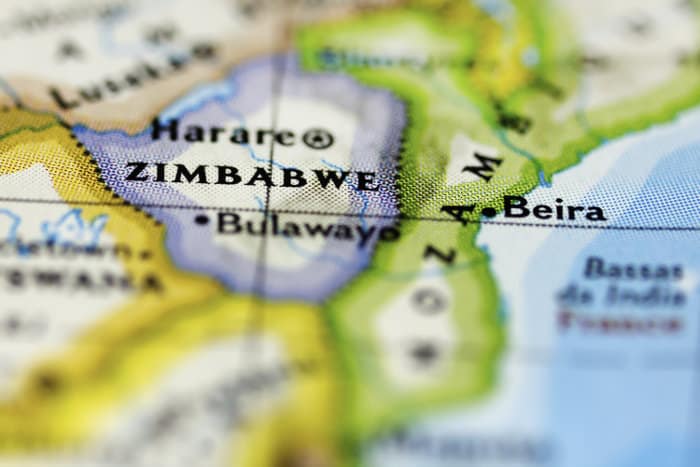
Where is Zimbabwe and how do I get there?
Zimbabwe is a landlocked country in Southern Africa, bordered by South Africa, Botswana, Namibia, Zambia and Mozambique. That means loads of options to extend the safari.
Getting there has been made easier by the redevelopment of Victoria Falls Airport. There’s a growing network of international flights to Victoria Falls and you can also fly to Harare, the country’s capital.
The most common overland travel route comes from South Africa. Drive or take a bus north from Johannesburg then start exploring. Visitors also come from the west, usually through the Caprivi Strip or Chobe to Victoria Falls.
Is it safe to travel to Zimbabwe?
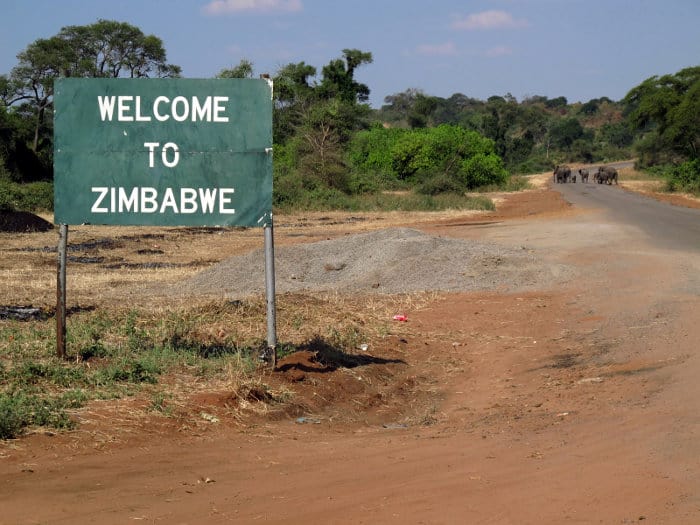
Yes. Despite what the media tell you it is safe to travel in Zimbabwe. If you are unsure then check the latest Zimbabwe travel advice from the UK foreign office. It is also advisable to avoid travel during elections.
Zimbabwean people are incredibly generous and welcoming. They do not reflect the political situation you may have heard about. There is no violence and there aren’t any no-go areas.
Around ten years ago there was a problem with road blocks and traffic officers demanding bribes from just about every vehicle that passed – especially those containing foreigners. This changed in 2015 when the Zimbabwean government tried to entice tourists back to the country.
The main challenge visitors face is dangerous wildlife. Hippos maraud around camps, elephants are seen along the highway, and there are no fences keeping people safe.
Watch out because on a Zimbabwe safari you can get closer than elsewhere. Nobody is going to stop you trying to pet a wild zebra or get a camera flash in an elephant’s face. If you’re stupid enough to do such things then yes, Zimbabwe can be dangerous.
What is the political situation in Zimbabwe?
In Asia they say same same but different. That’s the general consensus in Zimbabwe right now. After almost 30 years in power, Robert Mugabe was ousted from the presidency in 2017. The new president is Emmerson Mnangagwa, Mugabe’s former vice president and long-time ally.
So there has been change without any major diversification of power. Mnangagwa has installed more liberal policies and tourism has been a major focus, as well as a reduction in corruption.
It’s important to remember that the political situation doesn’t always reflect the will of the people or the experience had by visitors. Many Western countries have publicised political problems, yet these rarely keep tourists away.
How long is a Zimbabwe safari?
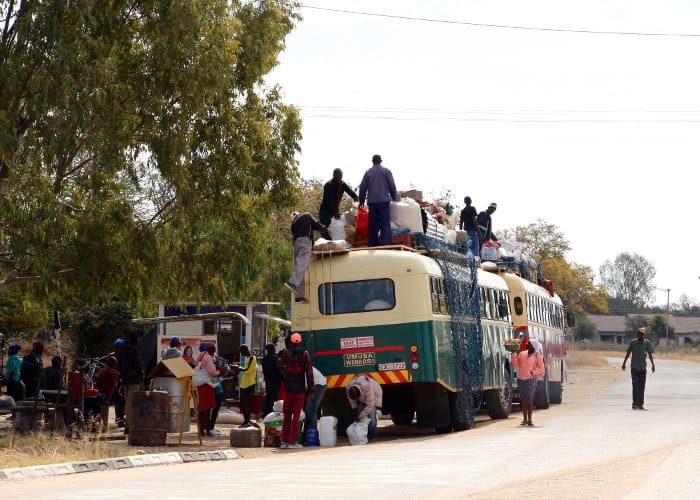
In Zimbabwe you need to travel a little slower than in other countries in Africa. The transport infrastructure is in need of maintenance and the safari destinations can be hard to reach.
Trips to Victoria Falls and Hwange are different. These are the two most famous destinations and can be visited on a four to five-day safari. However, allow two weeks to really explore the country.
What does a Zimbabwe safari cost?
In Zimbabwe there isn’t much middle ground. High-end Zimbabwe safaris cost similar to those in South Africa. With safari flights and boutique safari camps expect to pay USD 500 per day as a very minimum.
Budget tours use public campsites within national parks and are significantly cheaper, going down below USD 120 per day for some routes. Some overland tour companies still visit Zimbabwe and these provide good value small-group tours.
If you’re fully self-sufficient and have a four-wheel drive vehicle then it’s possible to enjoy one of Africa’s best safaris for less than USD 50 per day (excluding any vehicle hire).
Independent travellers will find it even cheaper. For USD 50 per day it’s possible to use public transport and camp in many of the national parks. You should be self-sufficient and have some experience with independent travel in Africa.
How can I travel around Zimbabwe?
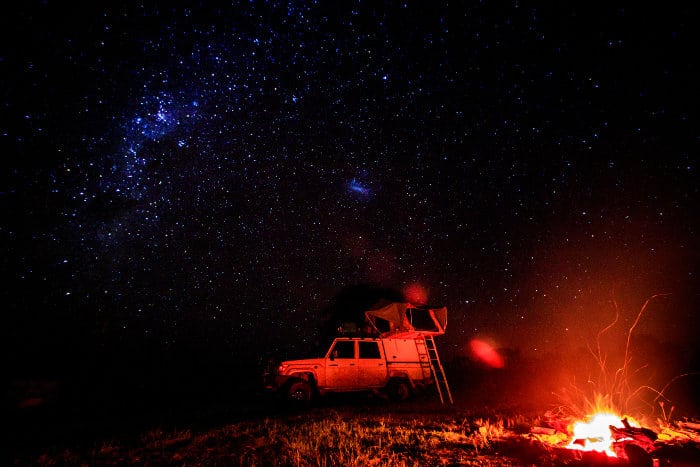
A guided small-group overland tour is the most common way to travel and these operate for a number of budgets. Private tours are more flexible and are well worth considering.
Luxury safari itineraries tend to use safari flights. These save time and help visitors quickly connect the country’s distant corners.
Since 2015 it’s much easier to do a self-drive safari in Zimbabwe. The public campsites need a little maintenance so you will need to rough it a little. However, park and camping fees are low in comparison to other African countries.
Public transport in Zimbabwe is similar to elsewhere in Africa. Large buses connect the major towns and cities, with smaller minibuses going everywhere in between. They are crowded and slow but it’s good fun and a nice way to meet people.
Also consider the trains. Vintage 1950s British carriages still carry people around and they are incredibly cheap. Bulawayo to Victoria Falls is a wonderful overnight journey.
Why is a Zimbabwe Safari Different From Everywhere Else?

Elephants walk past, swinging their trunks. A rhino gazes at you, its horn proud and defiant. A lion stands on a dusty savannah, black mane flowing in the breeze.
Sounds fun? Certainly. But it also sounds like a safari elsewhere in Africa. Zimbabwe has all the animals and plenty of wilderness. So does South Africa, Botswana, Kenya and Tanzania.
It’s difficult to choose Zimbabwe or any of these other countries on wildlife. Nor can you separate them on the diversity of ecosystems and habitats. Each country has its own specialisms and Zimbabwe is no different.
The reason to choose Zimbabwe isn’t just the wildlife or wilderness, it’s the opportunity to interact with the wild in a different way.
Less people
Close to 17 million tourists visited South Africa in 2018. For the last decade Botswana has received between 1.5 million and 2 million tourists each year.
Zimbabwe has never had more than 250,000 tourists in a single year, not even in its heyday as the darling of African safari.
Of these tourists the large majority are South Africans who travel during certain weeks of the year. Most international visitors don’t see anything other than Victoria Falls.
The country’s incredible national parks are so quiet you get a shock when encountering another person or vehicle. Here you don’t need to escape the crowds, you’re actually looking for other people!
Many people are looking to go off the beaten track. In Zimbabwe there are so few people that it feels like going off the beaten track, even in the best known destinations.
Less rules and getting closer
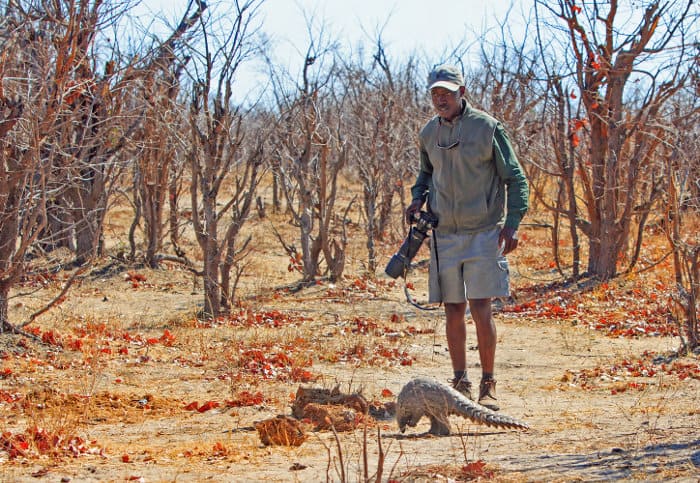
No fences prevent hippos from grazing through a camp. Nobody will tell you what to do when surrounded by elephants. This is the wild and anyone daft enough to disrespect animals will be in trouble.
The lack of rules makes it much easier to get closer in a good way. Most national parks allow off-road driving, essential when wanting to really encounter the predators. Game walks are part of the everyday experience, rather than an expensive add-on.
Canoe safaris take visitors past lions and hippos on the Zambezi River. In Matobo Hills it’s possible to walk amid the country’s largest rhino population. Many visitors experience the oh my God moment of finding themselves next to elephants and hippos, with very little for protection.
Some visitors even think that the lack of rules makes the activities a little dangerous. In this regard, it’s obviously important to do some research before choosing a safari operator or guide.
Ultimately there’s a freedom to safari in Zimbabwe. You can do just about anything you like and that helps you enjoy a greater intimacy with the animals. And if you go too far then the animals will be quick to tell you off in their own way!
Local Connections
Did we mention the Zimbabwean people yet? They are amazing. Warm, friendly, full of hospitality and eager to show visitors a real side to the country.
One Africa Freak contributor visited Zimbabwe as a backpacker in 2012. He spent three days staying with a Zimbabwean family in Highfield, Harare. The following year he visited for a week.

That experience isn’t uncommon. While the political mess has created certain perceptions, Zimbabweans are well educated people and speak English well. It’s easy to meet them and strike up conversation.
Most safaris are complemented with these experiences with local people, whether on a bus, in a town, or visiting the home of a safari guide. Shona is the main tribe in Zimbabwe and while they may not be the most iconic (certainly not compared with Masai, Zulu or Himba), they show visitors what Zimbabwe is truly about.
Unique safari experiences usually only found in Zimbabwe
- Canoeing along the Zambezi River, with deft paddle strokes keeping you away from hippos.
- Tracking black-maned Kalahari lions on the prowl in Hwange.
- Walking with rhinos in Matobo Hills National Park.
- Find yourself virtually surrounded by elephants, while on a walking safari.
- Coming face to face with Victoria Falls and staying clear of baboons wanting to steal your lunch.
- Exploring the unknown with a game drive in Gonarezhou.
- Connecting with local heritage with a day in Great Zimbabwe, the most important ruins south of Zanzibar’s Stone Town.
Safari experiences that are common in Zimbabwe
- Elephants – they always seem to be part of the scenery in the north and west of the country.
- Turning up at a national park campsite to find you’re the only person staying there.
- Going on game walks with local guides, something that’s possible in almost all of Zimbabwe’s destinations.
- Going off the beaten track and bumping along trails that haven’t seen vehicles for days.
- Safari on the water – most parks are dominated by a river or lake and you can usually go canoeing.
- Finding yourself alone with a magnificent safari scene and wondering why nobody else visits Zimbabwe.
The Best Time to Visit Zimbabwe for a Safari
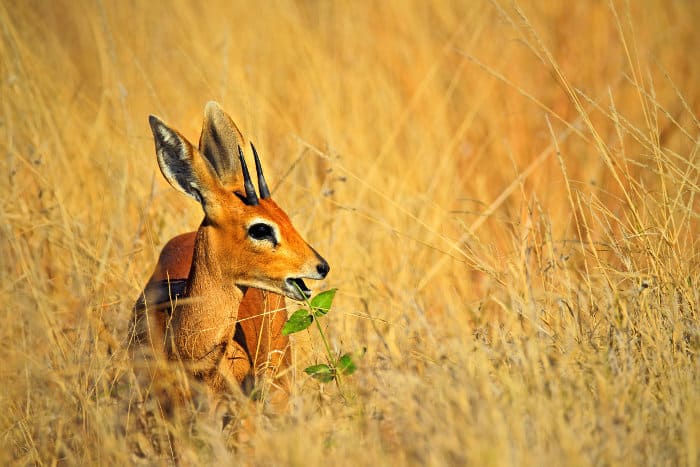
With a Zimbabwe safari you can visit during the very best months of the year, and still not expect any crowds. The country has a similar climate to neighbouring Botswana and it’s best to go on safari during the dry season.
May to August – Best months to visit
- This is dry season with no rain or malaria risk.
- The temperatures are milder and most comfortable for game viewing.
- Animals are easiest to spot as there is little vegetation.
- Although it’s the best time of the year there still aren’t many other tourists.
- Victoria Falls is in dramatic full flood between April and June.
- This is also the best time to visit Botswana and Namibia.
September to November – Great safari but hot
- The end of the dry season brings excellent game viewing.
- Temperatures really soar and can reach 40 degrees during the day.
- Victoria Falls are dryer so not as impressive, however, these are great months for white water rafting.
December to January – Hot and busy with South African visitors
- Very hot, humid and mostly uncomfortable.
- This is holiday season for South Africans and the busiest time of year for Zimbabwe safaris.
- Game viewing is poor as the rains brings high grass and dispersed wildlife.
February to April – Hot but worth it
- It’s still hot and occasionally wet.
- Victoria Falls is spectacular.
- Game viewing is getting better yet it’s worth waiting another month or two.
- These months are complete low season in Zimbabwe.
Where to Safari in Zimbabwe

Check out this more complete guide to the best safari destinations in Zimbabwe.
Here is an overview of what to expect and where to go.
Victoria Falls
The natural wonder and Zimbabwe’s most famous destination. It’s unmissable and it’s wild, with baboons and hippos encountered close to the world’s largest sheet of falling water. Oh, and it’s Mosi-oa-Tunya, not Victoria Falls. That means The Smoke That Thunders.
Read the complete guide to Victoria Falls here.
Hwange National Park
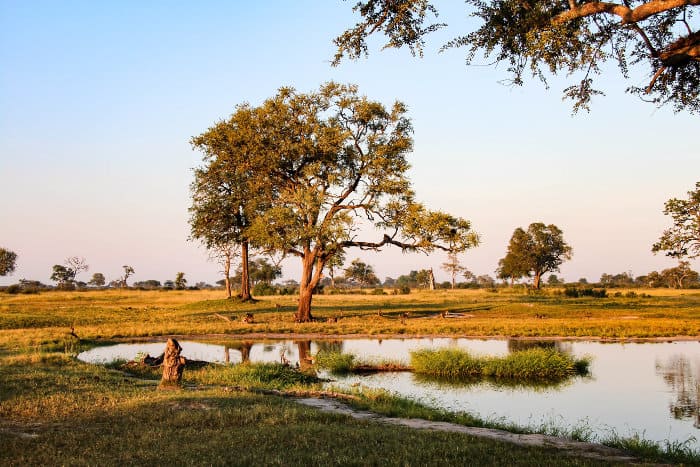
Zimbabwe’s largest and most famous park offers a classic big game experience. Think lions chasing buffalo, too many elephants to count, and a myriad of different antelope.
Hwange needs at least two nights (ideally three). The landscape is mostly arid savannah, with speckles of woodland to keep other animals happy. Of all the country’s destinations this is the one that’s unmissable.
Lake Kariba (Matusadona National Park)
The Zimbabwean tourist board tried to nickname Lake Kariba the French Riviera, which doesn’t make sense because there are no big five animals in France. 🙂
It’s a relaxed waterside retreat, with just a handful of camps and a real sense of serenity. Except for the rowdy hippos and rumbustious elephants!
This is a good place to start a safari, especially after a long flight. Most of the wildlife lives around the lake-shore in Matusadona National Park. While there’s not as many as Hwange, there’s a brilliant diversity of animals to encounter.
Mana Pools National Park
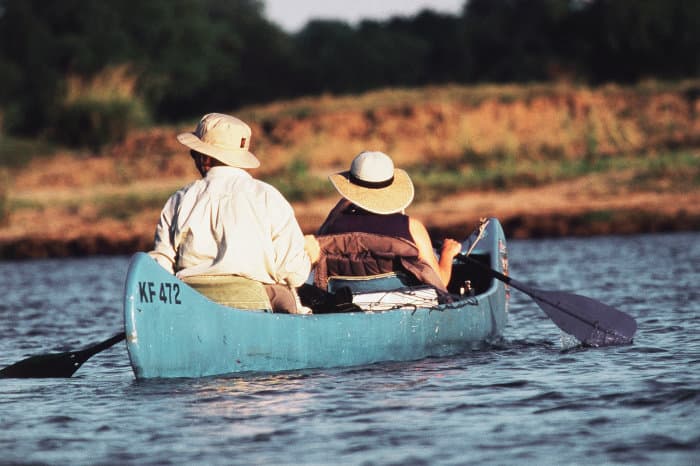
Contiguous with the Lower Zambezi National Park in Zambia, Mana Pools is part of a World Heritage wetland ecosystem. Watching large animals swim across the Zambezi River is one highlight. Walking safaris are another.
The safari experience is similar to Botswana’s Okavango Delta, particularly the full-day canoeing trips. However, Mana Pools is a fraction of the price for all the exclusive activities. You get a concession-style safari experience for a very affordable price.
Three days would be okay but it’s worth tailoring your itinerary around Mana Pools – it really is that good.
Chizarira National Park
Visit Chizarira for wilderness. The walking safaris are beautiful and there’s hardly anyone else in the vast park. You need to be self-sufficient as there are no camps or lodges anywhere in the park.
However, with elephant, buffalo, impala, tsessebe, leopard and spotted hyena, this enchanting park offers a firm connection with your wild side.
Matobo Hills National Park

Colonialist Cecil Rhodes is buried in Matobo Hills. He proclaimed these hills to be the World’s View. Rock art indicates that local people were here for many centuries before.
Matobo Hills is a lovely little park, ideal for a day or two of hiking. Then it has one very special experience. More than half of Zimbabwe’s rhinos reside here and you can go on game drives and walks with them.
Malilangwe and Gonarezhou
These two destinations are part of the Great Limpopo Transfrontier Conservation Area that also includes Kruger in South Africa. They have animal populations similar to Kruger except the landscape remain uncharted.
Malilangwe is a private concession similar to the Sabi Sands, best for high-end fly-in safaris. Most people stay three days, which allows for a full day drive in Gonarezhou.
Gonarezhou is a large national park with very few trails and an enormous sense of adventure. You need a sense of adventure as even the guides don’t know where animals hide. It’s a destination for safari connoisseurs wanted to discover somewhere new.
Other Destinations to Visit in Zimbabwe
Zimbabwe is not only a safari destination. With its friendly people and beautiful scenery it’s a country that really deserves time.
Great Zimbabwe

The ruins on which the country is named, Great Zimbabwe was the capital of a large kingdom that thrived from the 11th to 15th centuries.
These are Africa’s most important set of ruins south of Zanzibar and help visitors understand how much was here before colonialists. Watch out for the baboons though – they are now the rulers of the ruins!
Chimanimani Mountains
Hidden waterfalls and rainforest hikes make Chimanimani a lovely destination along the Mozambique border. Back in the early 2000s this destination was integral to the Zimbabwean backpacker trail. Now it’s rare to see any other visitors, although there are a couple of small lodges and camping facilities.
Harare

Zimbabwe’s bustling capital is not the easiest first impression. Years of underdevelopment make it seem like you’ve landed in the 1990s, especially with all the concrete architecture.
Harare is mostly a transit point that’s needed for travel elsewhere. Most visitors don’t spend longer than is necessary.
Bulawayo
The second city is cute and affable, although again, there’s not too much going on. Mostly Bulawayo is a transit point for heading out into the wilderness, notably towards Great Zimbabwe, Matobo Hills and Botswana.
Top Tips for a Zimbabwe Safari
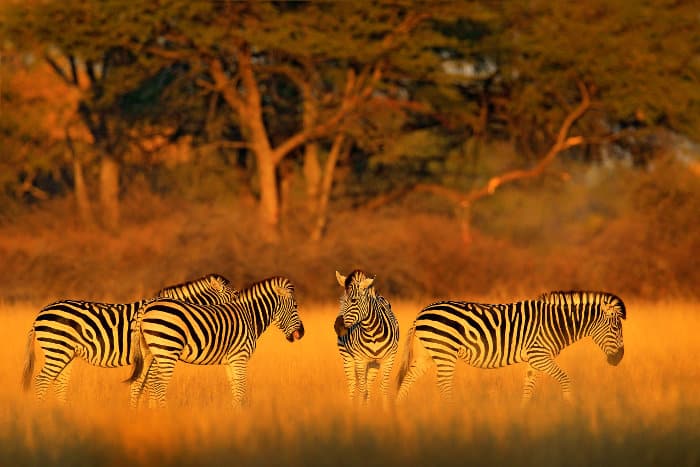
Just go for it. So many people are dissuaded by the political situation and it’s a real shame, because Zimbabwe has so much to offer.
It’s a great choice if you’ve visited Africa before and one of the easier countries to travel in, such as South Africa or Kenya. Go to Zimbabwe and the adventure will kick up a notch.
If you’ve never visited Africa then Zimbabwe can seem daunting. Consider going on a multi-country safari, incorporating South Africa and Botswana as well.
Most importantly, just go. One thing that hasn’t been affected by politics is the conservation. This is a wilderness country home to a superb abundance of wildlife and wilderness. It just takes a leap of faith to connect with your wild side!
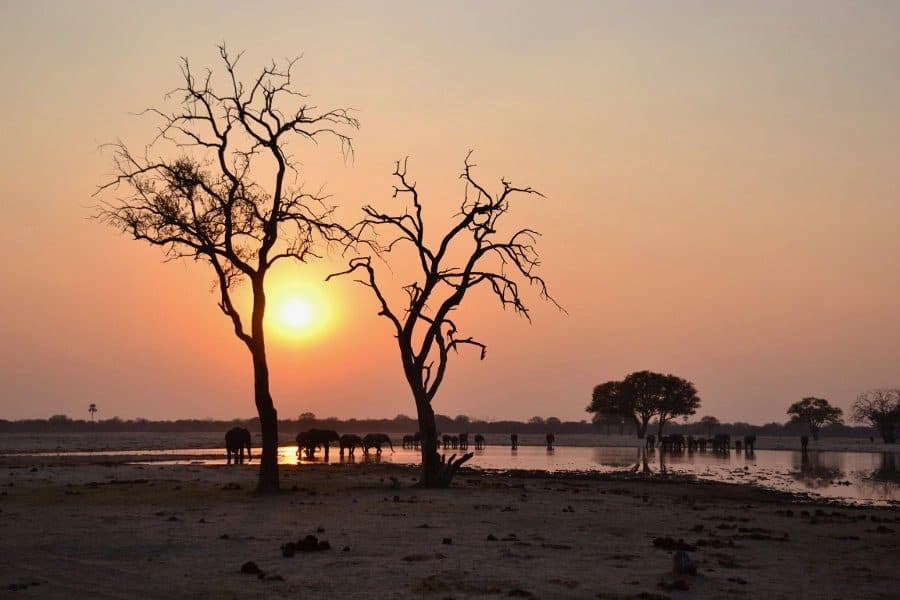
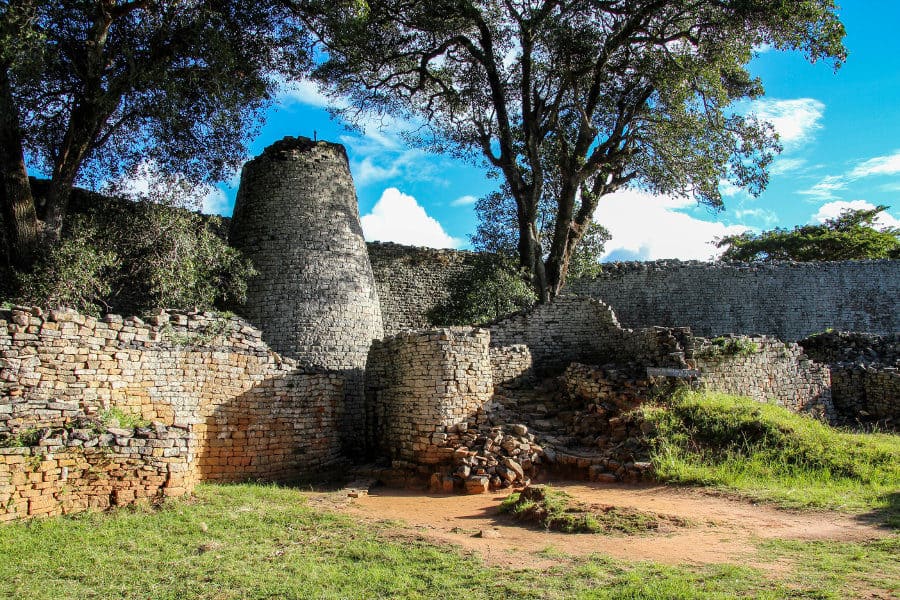

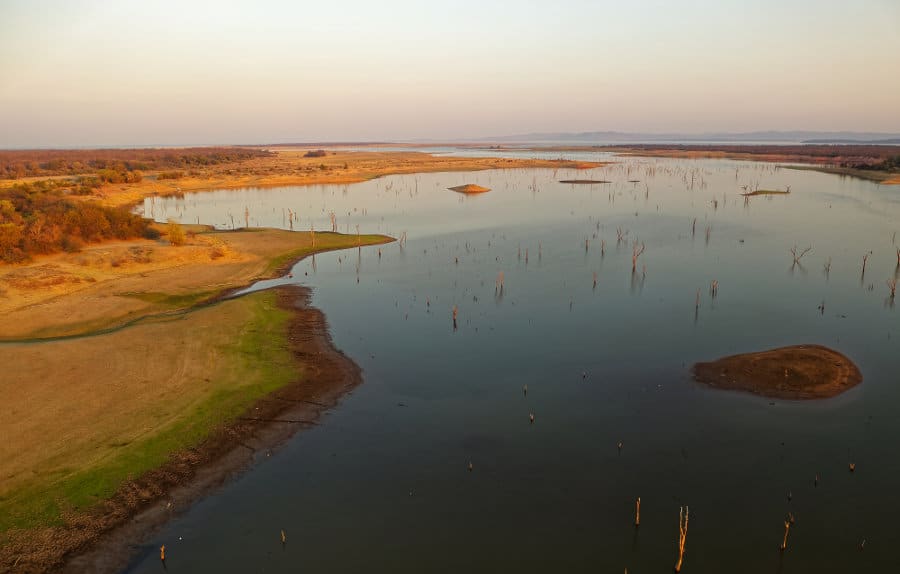
I enjoyed the article about safaris in Zimbabwe. I’ve been once and am planning another trip this September. I agree with most of your descriptions except for your comment about no one stopping you if you’re doing something stupid, like getting too close to animals. Unless you’re travelling on your own, this doesn’t happen. This comment is misleading and dangerous, Zimbabwe guides are highly trained and always ensure the safety of their group. The visitors’ safety is important and the guides know how to find the animals for viewing and never get too close.
I enjoyed the rest of the article but feel that you should edit the part where you make this misleading statement. It sounds like Zimbabwe is wide open for laissez faire visiting and this is not true.
Looking forward to my next safari in Zimbabwe!
Hi Elizabeth,
Thanks for your feedback.
While I understand your concerns, the actual comment shouldn’t be taken literally. It’s more of a touch of humour to pinpoint the fact that these places are wild and people should be extremely cautious when interacting with animals (especially on foot).
By no means does it imply that Zimbabwean guides are somewhat less competent than elsewhere.
Zimbabwe is one of the leading safari destinations (most notably for walking safaris), and it definitely has some of the most amazing guides in Africa.
Hopefully this clarifies things, enjoy your next Zimbabwe adventure.